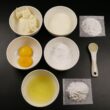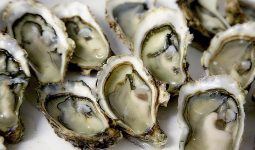Salads are healthful choices when attempting to eat correctly.
The key to making different types of salad dressings that are delectable is choosing the right dressing; without it, your salad won’t taste fantastic.
In this blog post, we’ve put up different types of salad dressings that you can prepare at home.
You can find different types of salad dressings recipes here that will spice up your cooking and provide you with a healthier way of life.
1. Classic vinaigrette
Among the different types of salad dressings, we have Classic Vinaigrette. A vinaigrette is a guaranteed hit with guests.
Oil and vinegar are a straightforward pairing that complements each other wonderfully on salads and grilled vegetables.
Every home cook has a unique interpretation of this common dressing. Some contain herbs, garlic, a tiny bit of wine, or Dijon mustard.
It’s an easy way to spice up a platter of vegetables without taking away from their flavor.
It is believed that the first salad dressing used to dress meals in antiquity was vinaigrette.
Others would argue that the first pizzas were created by early pizzaiolos who blended sour vinegar with flatbread dipped in olive oil.
The unleavened dough was heated on a hot rock and covered in oil and herbs to create these rustic pies, which are comparable to today’s focaccia.
Later, a vinegar wash was applied to the bread to enhance its flavor.
2. French
Compared to the recipe we are acquainted with today, the original French dressing was more like a vinaigrette.
Versions of the dressing are described as an oily vinegar and herb mixture in early cookbooks. French is one of the different types of salad dressings across the world.
But after the turn of the century, cooks started adding paprika and occasionally tomato paste to the dressing to give it the orange color that is now recognizable as the dressing because American customers desired some color to their cuisine.
This vibrant dressing works well on more than just salad. For proteins like chicken and shrimp, it works well as a marinade, and it also makes a stylish dip for crudités. Even in a cold potato salad, you can use it in place of mayo.
3. Italian
Italian dressing is a variation of the traditional vinaigrette that includes a few more ingredients.
In addition to the oil and vinegar foundation, the fun also includes lemon juice, garlic, and a combination of herbs.
Italian is one of the different types of salad dressings commonly in our world today. To improve the flavor, some variations include white wine.
It works well as a marinade for tofu and chicken; however, it’s most frequently used as a dressing.
Although the label may be a little deceptive, the flavor isn’t. In reality, Italian dressing has American-Italian; you can make yours by enhancing it with traditional Italian flavors like oregano, fennel, and garlic.
Garlic was somewhat fresh to the American palate at the time. Once undesirable due to its strong aroma, garlic began to gain popularity.
More Italian immigrants moved to the United States and brought their culinary traditions with them.
Italian cuisine gained popularity after World War II when soldiers with a penchant for the dish returned from the Italian front.
4. Honey Mustard
Although the flavor combination was not novel, honey mustard is knowns to be one of the different types of salad dressings.
This sweet-tangy combination sprang to popularity as a salad dressing in the 1970s.
They even cooperated to create recipes that were offered in ancient Egypt. Even now, people still find the honey and mustard combination to be appealing.
Honey mustard is a great dipping sauce for chicken fingers, french fries, and pizza.
Making this salad dressing at home is easy. We suggest a 3 to 1-ratio of honey to mustard, adding apple cider vinegar for acidity.
Depending on your palate, you could choose to add more honey to make it a little sweeter or more mustard to make it a little spicier.
With so many varieties of mustard available, such as spicy brown, Dijon, and yellow mustard, home cooks can experiment with this fundamental combination and produce a distinctive take on the traditional salad dressing.
5. Blue Cheese
Among the different types of salad dressings, blue cheese stands out.
Chunks of blue cheese, mayonnaise, yogurt or sour cream, and parsley are all ingredients in the traditional blue cheese dressing recipe.
Blue cheese’s strong flavor is diminished by the mayonnaise and yogurt, making it more pleasant for those with delicate palates.
Blue cheese is said to have originated in French caves, although the dressing was probably created in America.
Although it’s not certain when it first appeared, 1918 is when the dressing was first mentioned in print. Today, blue cheese dressing is a common ingredient in homes with salad eaters.
The term “blue cheese” refers to a variety of cheeses, such as the French Roquefort, the Italian Gorgonzola, the Spanish Cabrales, and the Danish blue cheese.
You can make blue cheese salad dressing with any of them. It’s best to start with Danish blue cheese if you are unfamiliar with the intense flavor and aroma of blue cheese.
6. Thousand Island
There is no question that the group of islands in the northeastern United States close to the Canadian border is where Thousand Island got its name.
Yet, it’s unclear exactly how the dressing came to be.
Thousand Island is one of the different types of salad dressings you can try. There are two origin myths for this well-known salad ingredient.
One attributes Sophia Lelonde, who, along with her husband George, operated Clayton, New York’s Thousand Islands Hotel restaurant, with creating the dressing.
The other claims that the dressing was made up on the spot by the chef of the famous Waldorf-Astoria hotel’s proprietor while on a summer island vacation.
Given that a friend of Lelonde was also a friend of the cooks, it is likely a blend of the two tales, as is the case with most legends.
Whatever its history, Thousand Island is a well-liked salad dressing today. This inventive burger topping, which combines mayonnaise, ketchup, and several seasonings, is now widely used.
7. Caesar
Even though anchovies are small fish that hardly everyone likes, they are the star of the Caesar dressing.
These salty morsels are whisked together with Parmesan cheese, croutons, and raw egg, then tossed with Romaine lettuce to make an outstanding salad.
Caesar is one of the different types of salad dressings that people embrace for its unique taste. Strangely, the unfortunate Roman ruler is not the name of this inventive dressing.
The Caesar salad was developed by locals in Tijuana, Mexico, which is far from Rome.
First offered at his restaurant as a method to use leftovers to feed hungry customers, the heap of romaine was tossed with the legendary dressing.
The salad dressing’s distinctive flavor is not just for the salad bowl. It can be used as a dipping sauce or sandwich spread thanks to its adaptability.
Also, it works wonders as a mayo alternative for foods like coleslaw and macaroni salad that you want to spice up.
Don’t worry if you’re a vegetarian or dislike fish with strong flavors.
Simply use a mixture of Worcestershire sauce and Dijon mustard in place of the anchovy in the Caesar dressing recipe to get the distinctive umami flavor.
8. Balsamic Vinaigrette
Beyond the green salad, balsamic vinaigrette has other uses. With a straightforward Caprese salad of fresh tomato slices, mozzarella, and basil, this dark, tart dressing is ideal.
When accompanied by pieces of crusty white bread for dipping, it also works well as an appetizer.
Balsamic vinegar is traditionally produced in Modena, Italy, following a rigorous certification procedure. It is also one of the different types of salad dressings.
Parmigiano Reggiano and prosciutto crudo, both of which are fantastic with a drizzle of balsamic vinaigrette, are also made in Emilia-Romagna, a region of Italy.
Real balsamic vinegar has an expensive price tag per bottle because it is aged for 12 to 25 years.
Thankfully, you can also prepare a balsamic vinaigrette without a costly foreign bottle.
9. Tahini
Tahini has been utilized in the Middle East and Mediterranean for ages and dates back to antiquity.
It has a mild, nutty flavor and is ideal for drizzling on top of a pita sandwich or offering as a dipping sauce on a Mediterranean platter.
It is also a crucial component of hummus, and it is also one of the different types of salad dressings.
Tahini is combined with seasonings like lemon juice and garlic as well as water to thin out the paste when used as a salad topping.
The dressing is becoming more and more popular because it has many different tastes and is good for you.
It complements Mediterranean dishes like fish and roasted vegetables, in addition to salads.
Even the most basic meal, such as a bowl of raw vegetables or a protein such as chicken, shrimp, or tofu that has been roasted, is improved by the dish’s silky, smooth texture and the acid from the lemon.
10. Green Goddess
Green Goddess dressing is typically created with mayonnaise, sour cream, anchovies, herbs, and a touch of lemon.
It is vibrant in flavor and color. Mix it with salad greens to make it more vibrant, or use it to dip crudités for a crisp bite.
For the ideal picnic lunch, replace the mayonnaise with cold pasta or potato salad.
This Green Goddess is known for its amazing taste and is commonly accepted among the different types of salad dressings.
11. Ranch
According to the Food Network, the most popular dressing in the US isn’t just for salads. The ranch is the perfect pizza, fries, and chicken wings dipping sauce.
Notably, the tangy dressing served as the model for a well-known Doritos flavor. It is also known for its unique taste, which stands out among others.
Ranch’s unique flavor derives from a blend of buttermilk, mayo, sour cream, and herbs. The proprietary mixture gives your greens just the right amount of delicious fat.
During World War II, as the health movement spread to California, ranch dressing arrived on the scene at the ideal time.
Ranch dressing, which is commonly used in the US, is one of the different types of salad dressings that we have in the world.
Salads were becoming increasingly popular at the time as a way to maintain a healthy lifestyle.
According to The New York Times, the dressing concept originated in the 1950s with plumber Steve Henson.
When word of his creamy, peppery creation spread among friends, family, and coworkers, he began to produce and market it from his ranch, known as Hidden Valley.








